Aneides lugubris
—
Arboreal Salamander
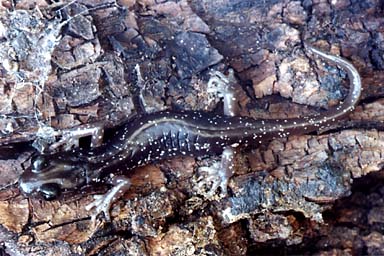
Despite its name, I found this salamander, like nearly every salamander I've ever seen, under a log. A scorpion probably large enough to have it for dinner was sharing its woody hideout. Sheep Dung Estates is full of scorpions under logs in an approximate ratio of one scorpion for every salamander.
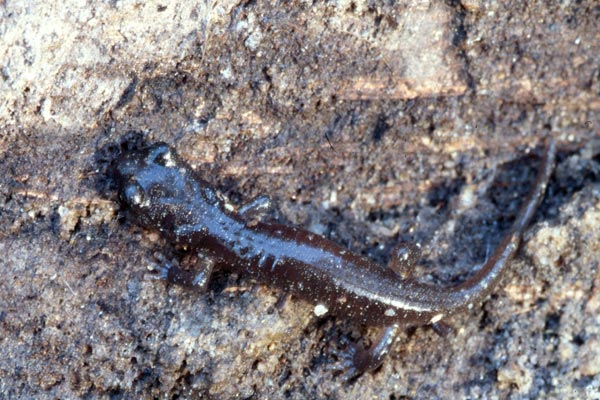
This small fellow was, of course, under a log. I've seen dozens of Santa Lucia Mountains Slender Salamanders and Monterey Ensatinas in this part of the Del Monte Forest, but this was the first Arboreal Salamander I'd seen there. (I've seen lots more since, though.)
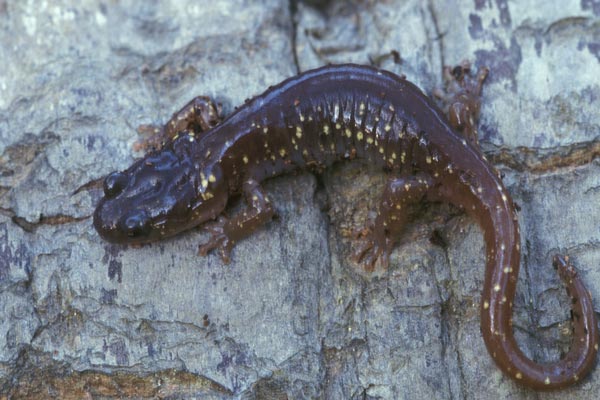
January 28, 1999 was salamander bonanza day. In a couple of hours of walking the dog while looking under logs I discovered 57 salamanders. This total comprises 45 Santa Lucia Mountains Slender Salamanders, 4 Monterey Ensatinas, and 8 Arboreal Salamanders. The arboreals ranged from nearly black to pretty light purplish tan. This one was medium dark with relatively prominent yellow spots along the sides. The secret to discovering arboreal salamanders and ensatinas seemed to be the size of the log looked under. The slender salamanders were indiscriminate about cover size, but the larger species definitely preferred larger logs. Even the little bitty babies of the larger species were most commonly found under large logs.
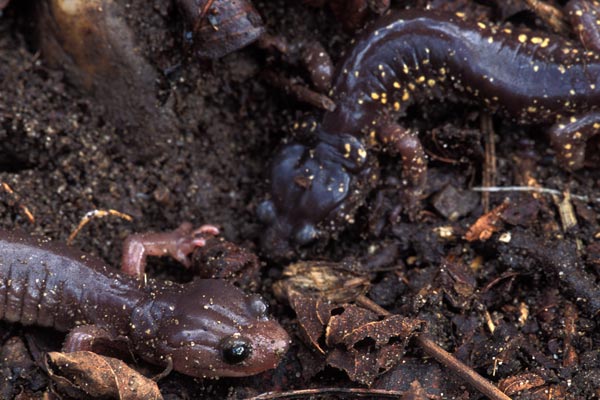
This pair of salamanders were sharing companionship under a board. One was much lighter in color than the other. I suppose they could be a mating pair, but I don't know how to tell a male arboreal salamander from a female one.
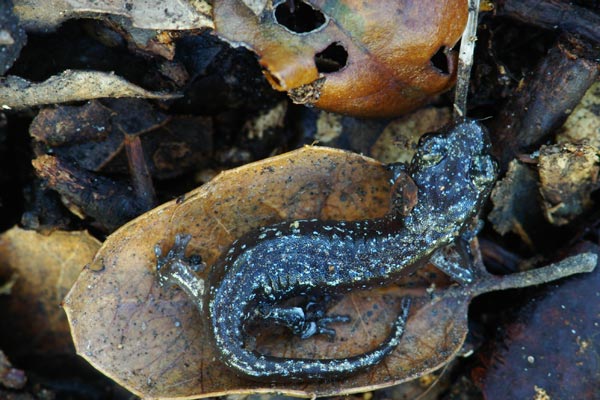
This tiny little salamander couldn't have been more than a few days old. I am not entirely convinced that it's not the closely-related Santa Cruz Black Salamander.
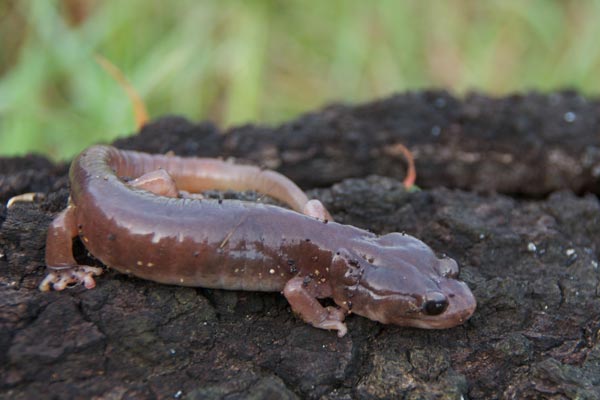
I hadn't seen an Arboreal Salamander in a couple of years before uncovering this one beneath a log. For salamanders, they have big, strong jaws. I've heard stories of people getting painful bites from Arboreal Salamanders, but so far none have ever attempted to bite me.
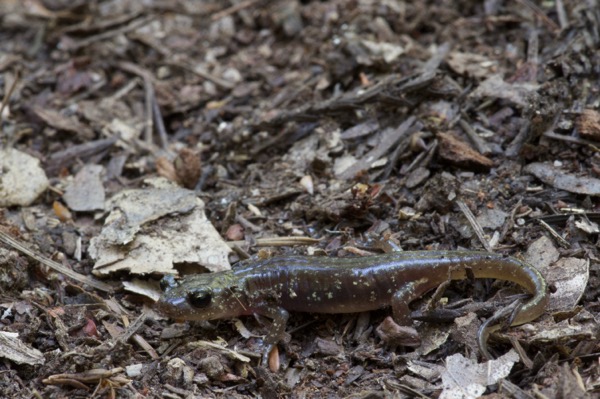
Sometimes people (admittedly including myself) will wash a salamander off with a little water before photographing it, so it doesn't have all sorts of things stuck to its moist body. I probably should have done that here.
Printed references:
- Basey, H. E. 1976. Discovering Sierra Reptiles and Amphibians
- Behler, J. L., King, F. W. 1979. The Audubon Society Field Guide to North American Reptiles & Amphibians
- Crother, B. I. (ed.) 2017. Scientific and Standard English Names of Amphibians and Reptiles of North America North of Mexico, with Comments Regarding Confidence in Our Understanding, Eighth Edition
- Henson, P., Usner, D. J. 1993. The Natural History of Big Sur
- Petranka, J. W. 1998. Salamanders of the United States and Canada
- Schoenherr, A. A. 1992. A Natural History of California
- Stebbins, R. C. 2003. Peterson Field Guide to Western Reptiles and Amphibians, Third Edition